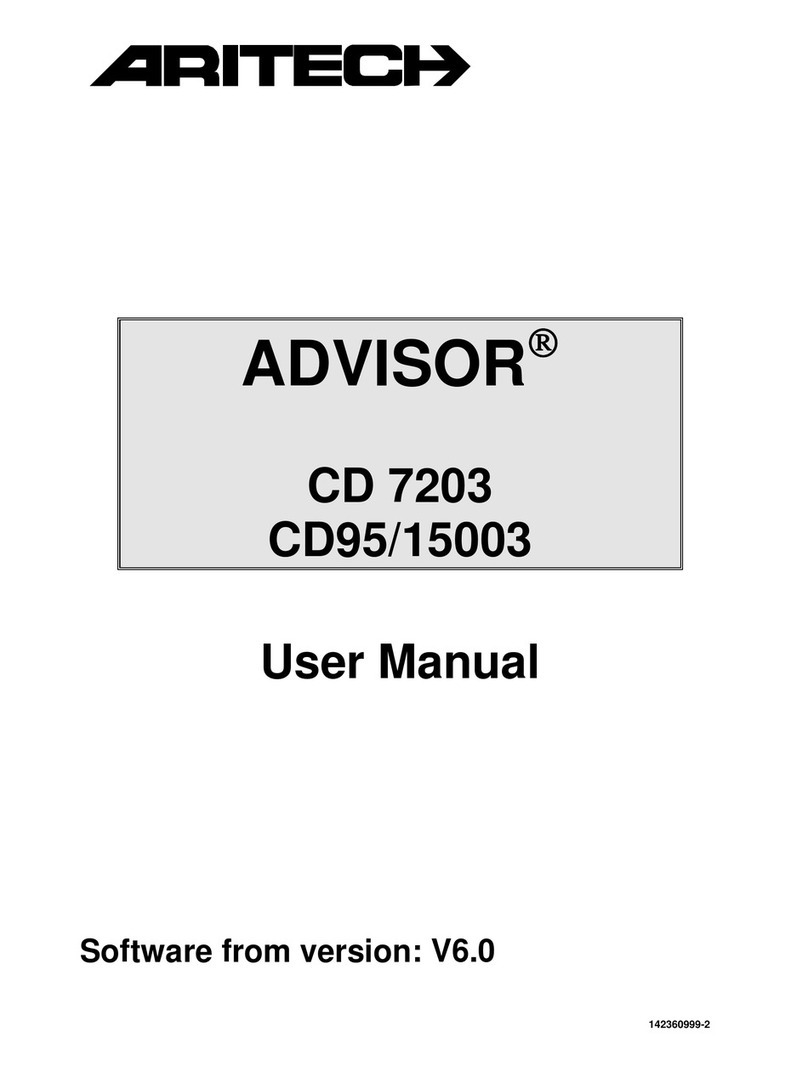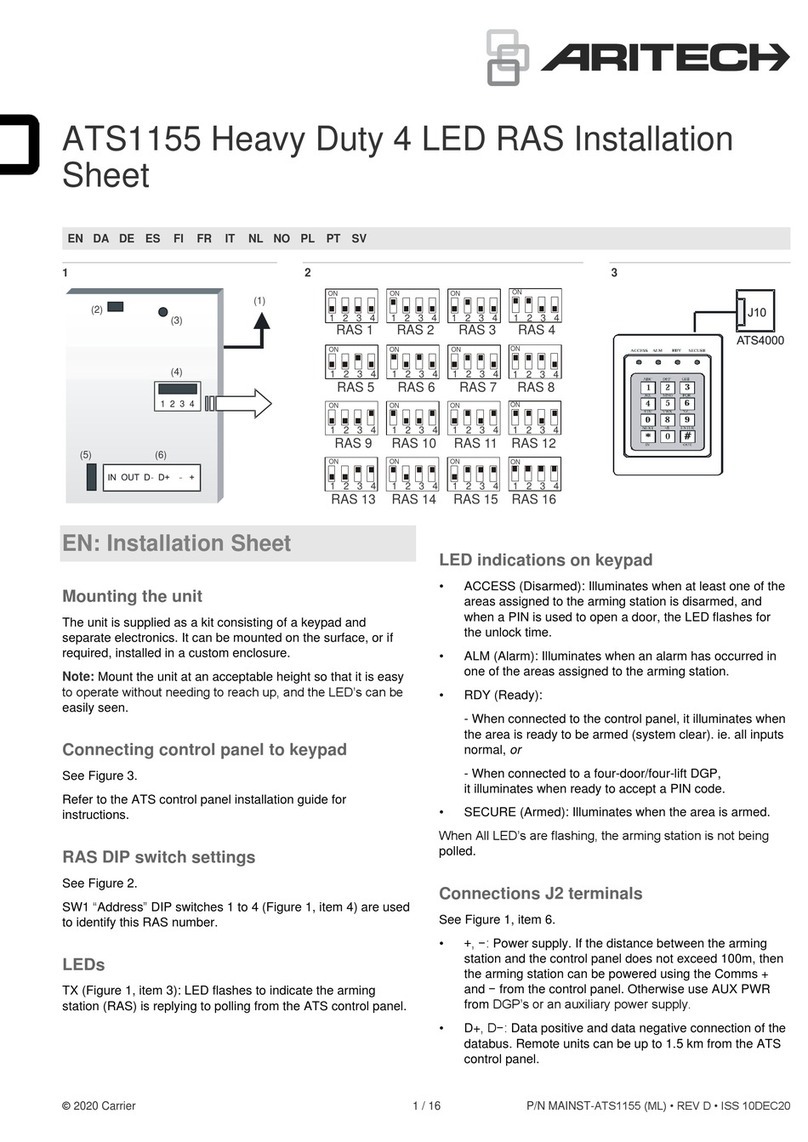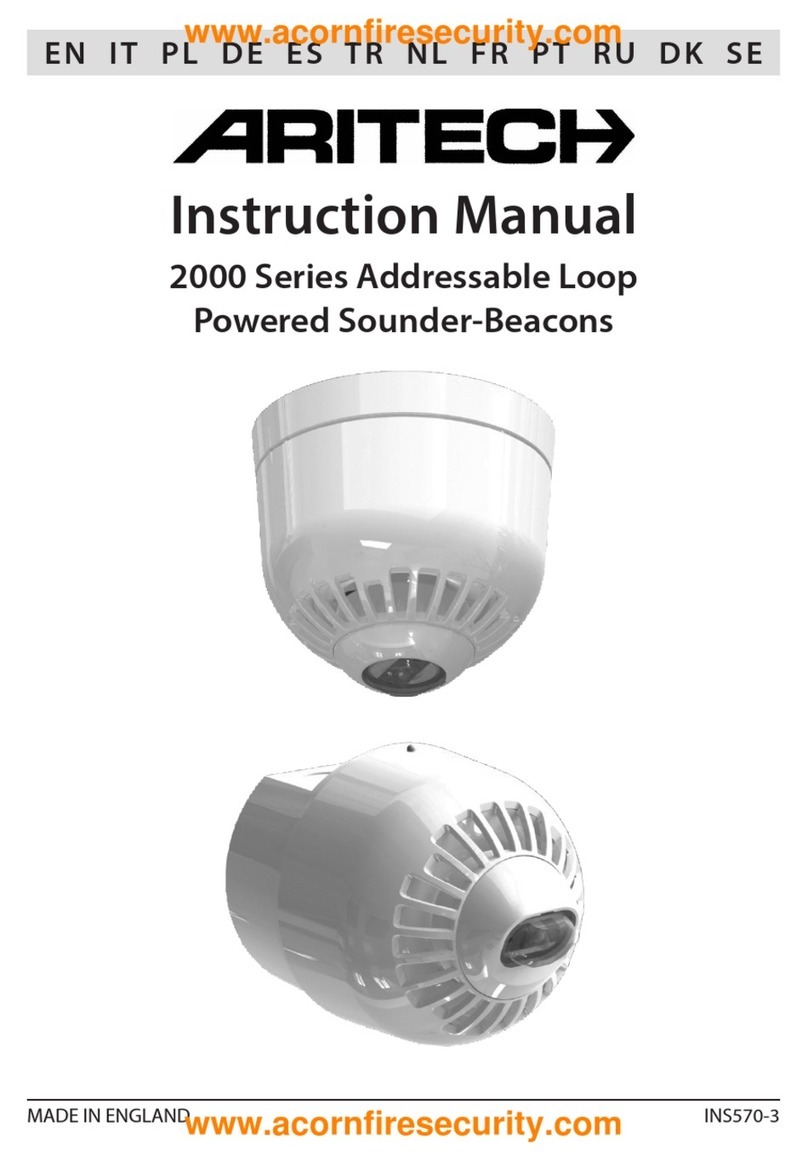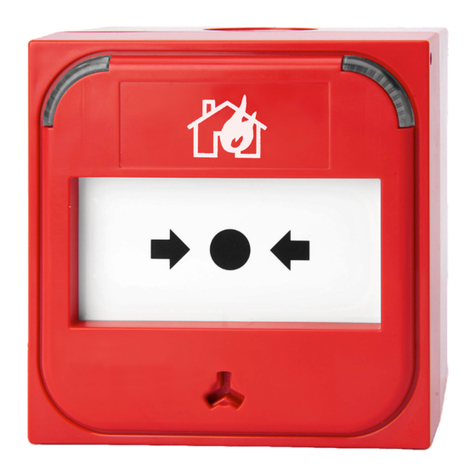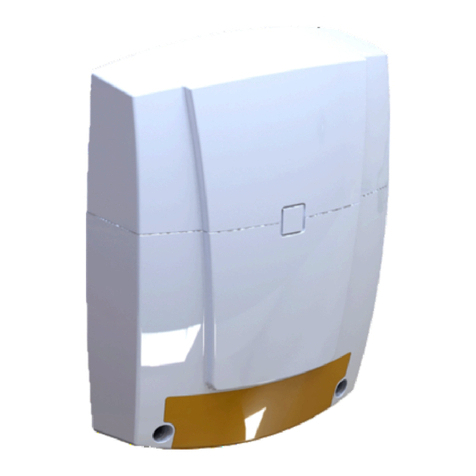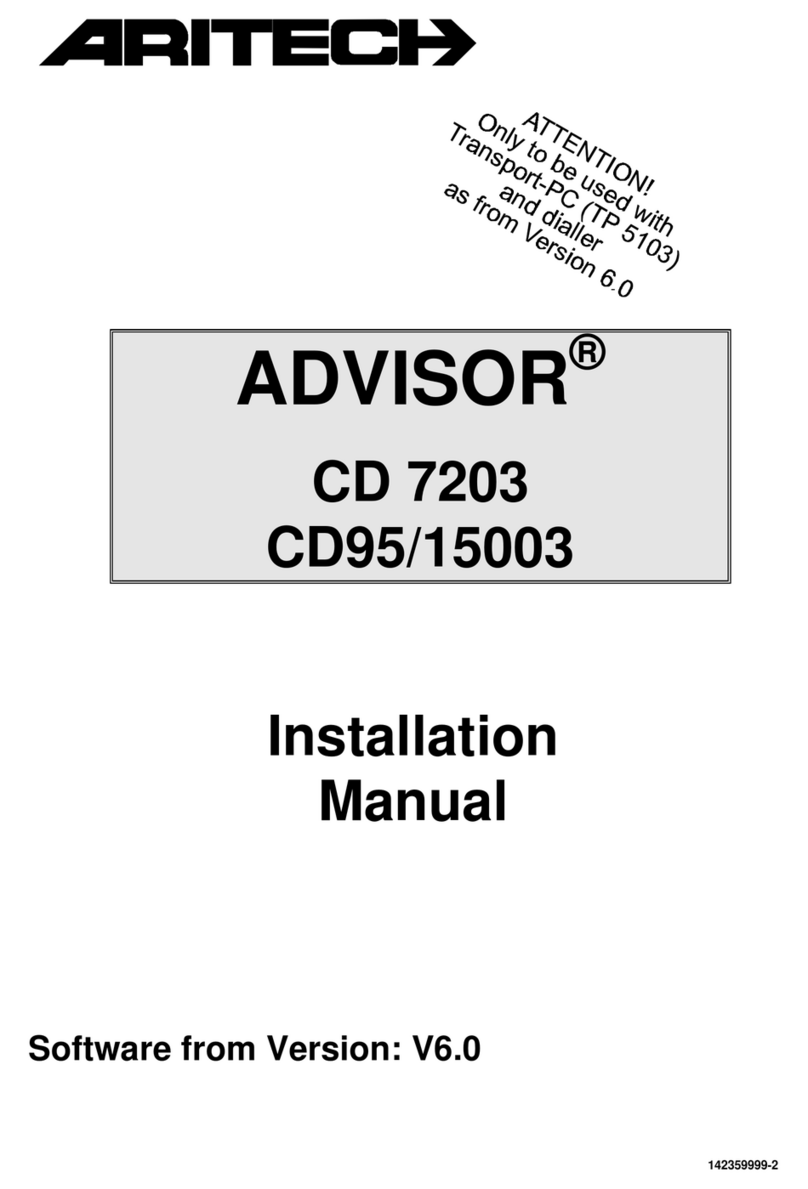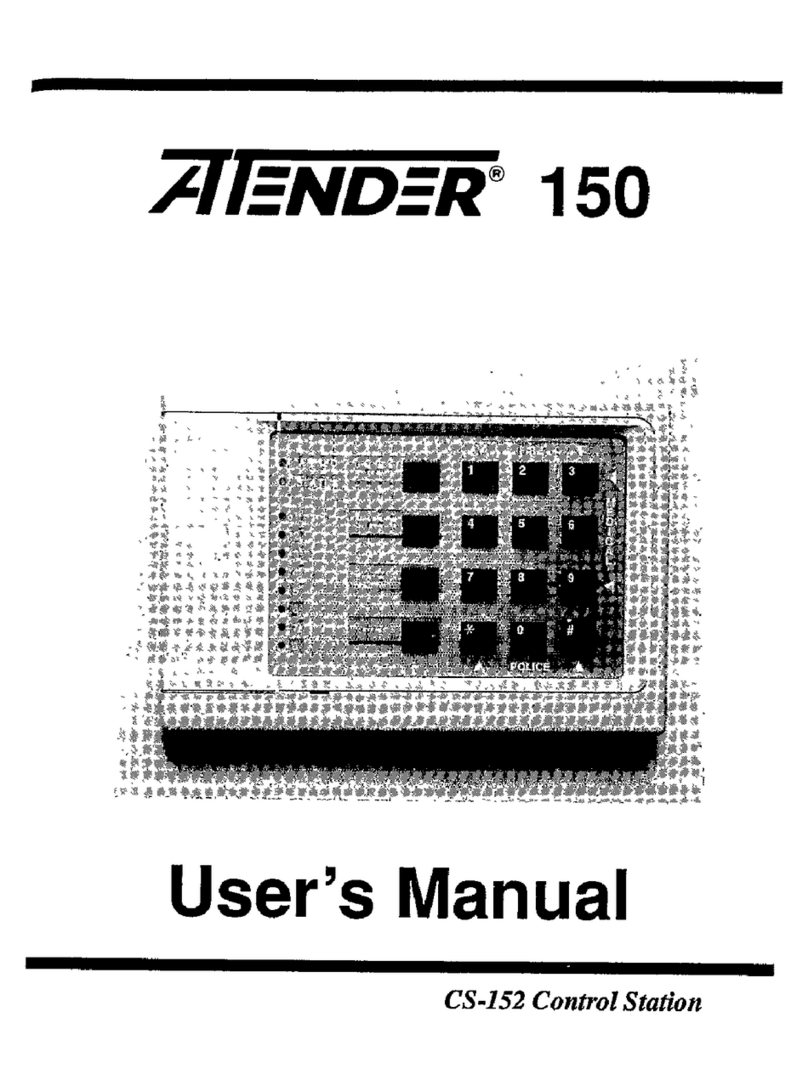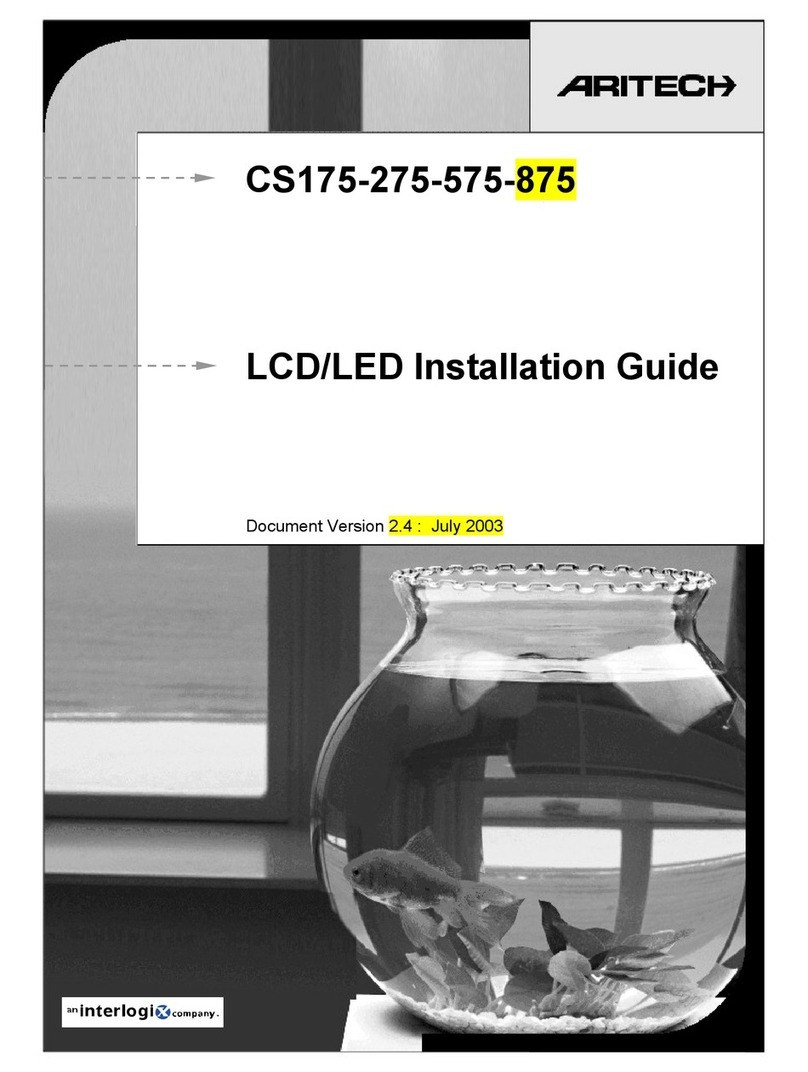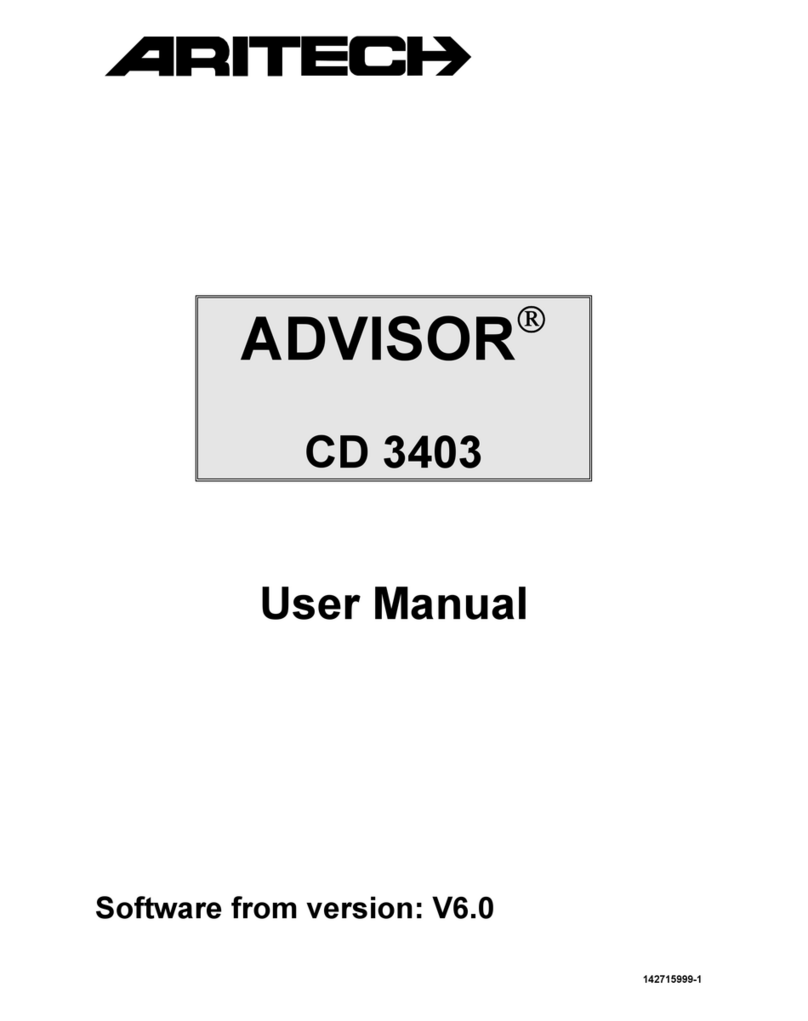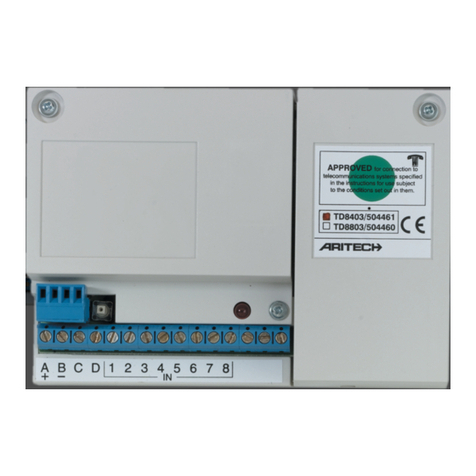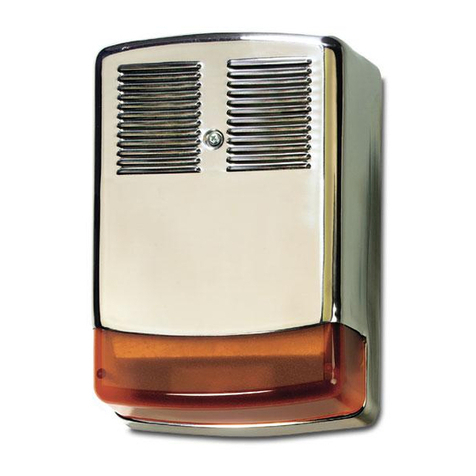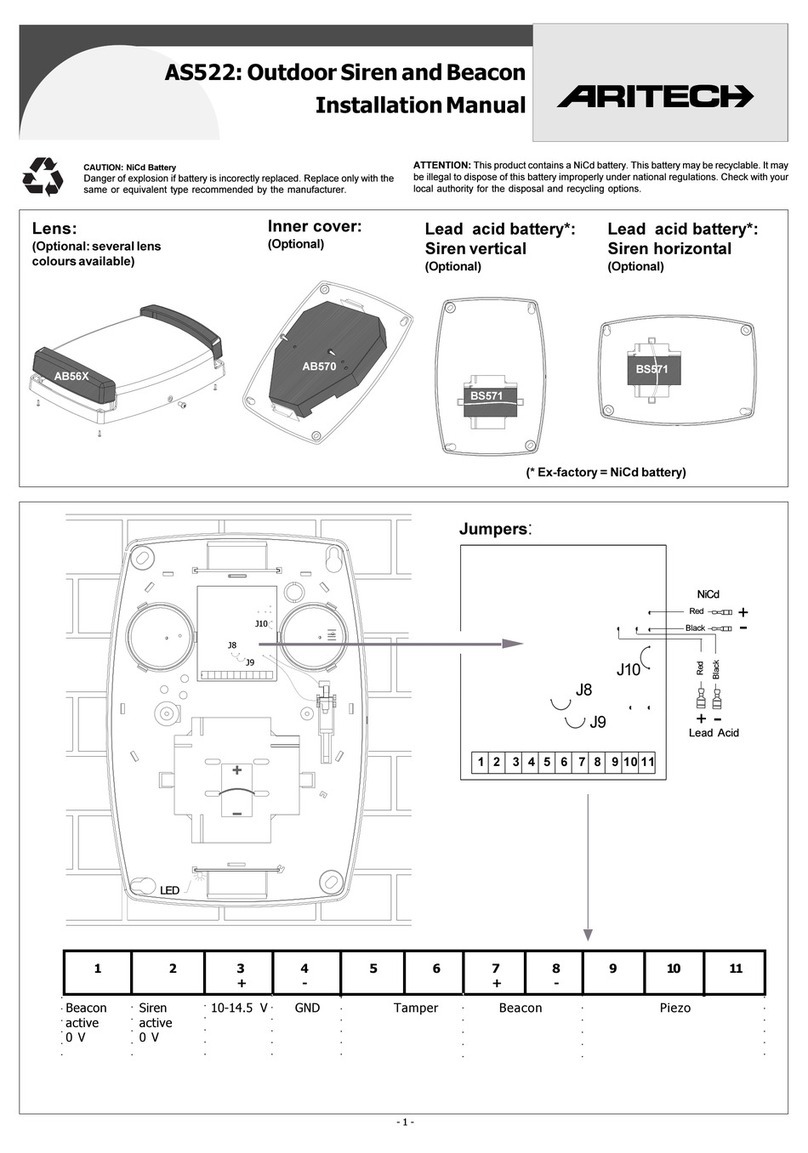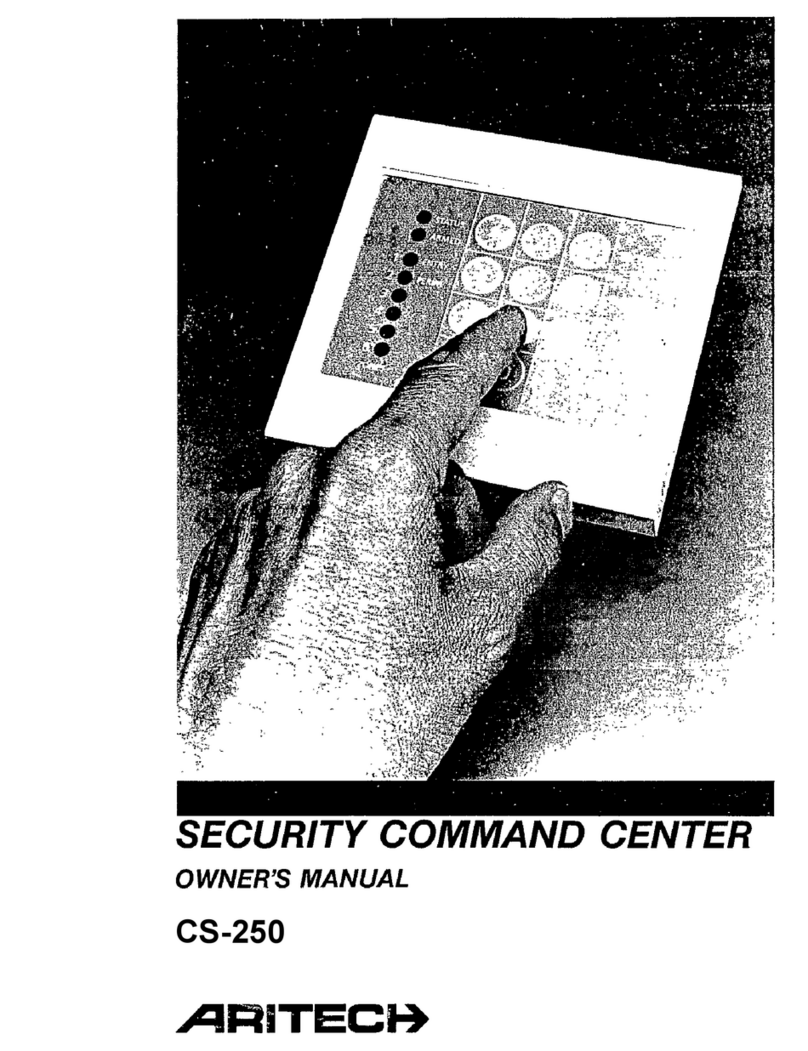2 / 16 P/N PAK200953-ML • REV F • ISS 12JAN23
(Ring Line) connection is constantly monitored and will cause
the unit to self-activate (if SAD mode selected) and generate a
Tamper signal to the control panel if loss of connection is
detected.
AS280G3 is classified as a self-powered sounder.
Note: BS122N battery should be purchased separately.
The battery can be recharged via the external power source.
This battery is used to operate the sounder if the external
power is removed. AS280G3 can be configured to self-activate
(SAD Mode ON) in the event that a Tamper condition is
detected and will always self-activate if the external power is
removed.
AS280G3 self-test, to check the integrity of its on-board battery
and battery charging circuit, is performed every 24 hours. If an
error condition is detected, a Fault (Faute) signal is generated.
This is normally connected back to the control panel. This self-
test can be triggered at any time by a Remote Test command
sent from the control panel. An on-board diagnostic LED
provides visual indication of Battery or Charger status.
To assist with commissioning, AS280G3 has an Engineer
Mode to provide silent start-up and audible confirmation to
indicate the correct closure of the tamper detection switches
and correct battery connection.
Features
•High efficiency operation
•Silent engineer start-up
•Selectable sound cut off timer
•Selectable SAB (SAD) mode
•Front and rear tamper
•Battery circuit protection with resettable fuse
•Diagnostic LED
•Battery test with fault output
•Remote test input
•Ring line monitoring
•Microprocessor controller
•Enclosed electronics module
•Audible tamper status to assist with commissioning
•Break-out rear tamper section for easy installation
Note: In accordance with Grade 3 requirements, the siren
tamper output is triggered when the siren detects:
•Sounder + power supply (ALIM+) cut
•0 V power supply cut
Caution: Do not connect the ALIM+ power supply to AUX+
power supply of the control panel, which disconnects during a
mains fault. It must be connected to a permanent + power
supply.
Functional information
Tamper circuit for single or multiple cascade installations
The AS280G3 sounder provides a tamper (Auto-protection)
circuit for both single (Figure 3) and multiple cascade
installations (Figure 4). In cascade installations with two or
more sounders, from the end-of-line sounder, moving back
towards the control panel, AP(R) of the sounder is connected
to AP(S) of the previous cascade sounder. Cascade units must
also have the white CASC link cut. Do not cut the CASC link
on the end-of-line sounder.
Engineer Mode (“ING”)
Selects silent start-up and silent maintenance. The Engineer /
ENG (ING) input may be brought back to the control panel and
connected to a programmable output (or manually connected
to ALIM+). Switching this control panel output high when
maintenance is required will prevent the sounder from self-
activating when the cover is removed or BL+ activated. The
Tamper output is open when ENG mode is activated, this
prevents inadvertent system setting.
Self-test and Fault output
The AS280G3 sounder performs a self-test every 24 hours.
This function tests the condition of the battery. If a fault is
found the Fault (Faute) output will open. The fault source can
be identified using the Diagnostic LED (see “Diagnostics” on
page 4). This is ONLY enabled when the cover is opened
(cover tamper active) for longer than 2 s, and the TEST input is
low or not connected.
The Fault output will be cleared (output closed) when:
•The fault has been cleared, for example, battery
connected
•The fault has been cleared and the sounder performs a
self-test (Remote input or 24-hour self-test)
•The fault has been cleared, and both ALIM+ and the
battery has been disconnected / reconnected,
—or —
TEST connected to ALIM+ to initiate self-test.
Remote Test
With the cover closed, taking the Remote Test/REM (TEST)
input high will force a self-test (ING input low or not
connected). The Fault output is immediately opened to
acknowledge receipt of the Remote Test command. The
battery is immediately tested. Any fault found will be indicated
by the Fault output remaining open after 25 s. The Fault output
will remain open until the fault has been cleared and another
Self-Test or Remote Test has been performed. If the self-test
has passed, the Fault output will close after 25 s from starting
the Remote Test.
Options selection
Table 1 below summarises the link options for various modes
of operation.
Table 1: Option selection links
